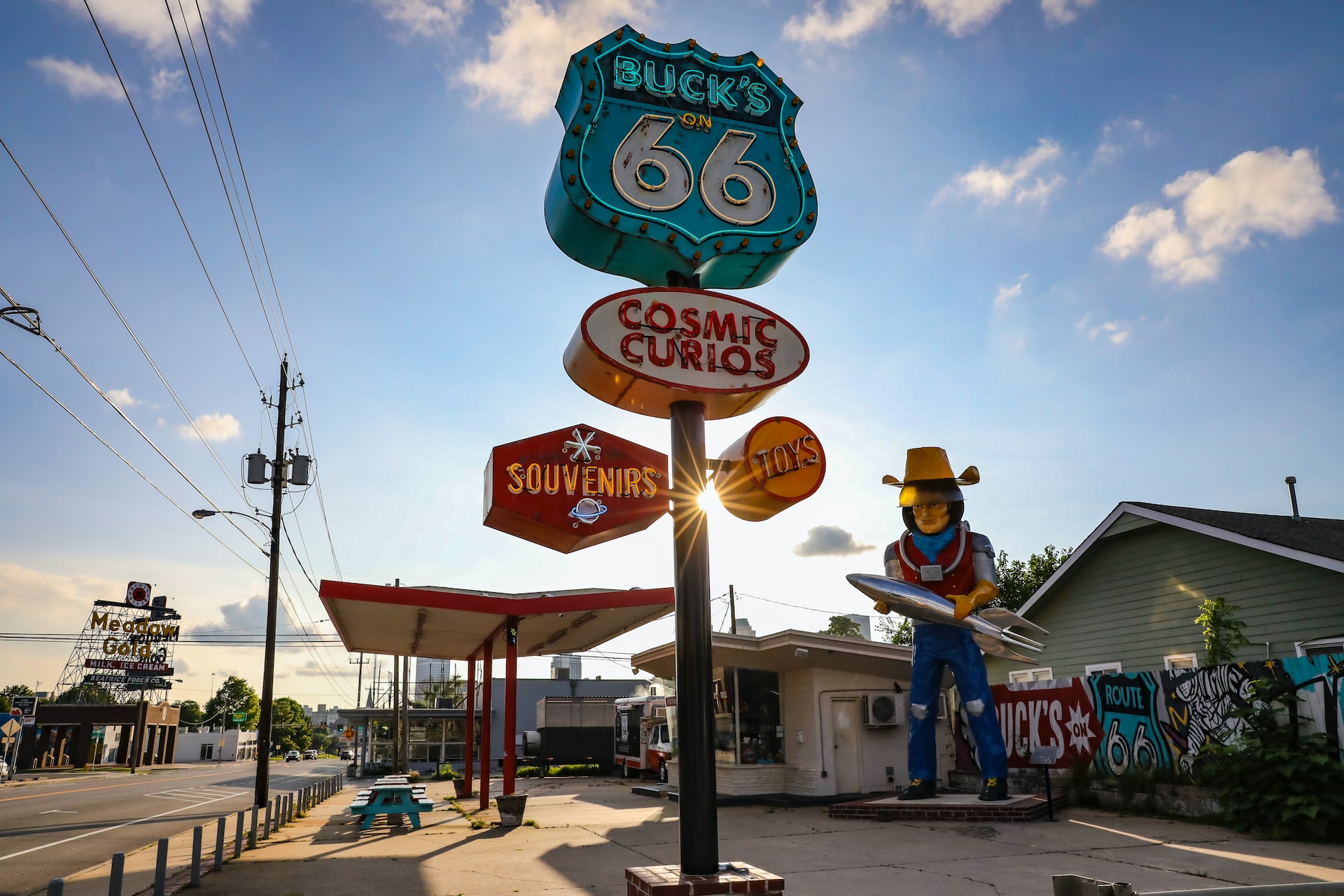
I’m sure many of you have heard of the infamous Route 66 and those that have probably wondered how it came to be, maybe even wondered what it was like riding down it and how you could take up a trip down its roads someday. Well, let the CrossHelmet Team fill you in on said thoughts and many others you might have in our Backroad History segment. So buckle up, or if your riding a motorcycle then put on your helmet and allow us to guide you, as you ride on a Journey, down the Backroad, down Route 66.
Undoubtedly, one of the most famous routes in the world for riding, U.S. Route 66 was officially commissioned in 1926, according to the National Museum of American History, with it, believe it or not, being fully paved by the late 1930’s. This was an historic time throughout America for new highway systems, as new highways began popping up all over the country. While US Route 66 was not the first highway specially designed for automobiles in America nor the first long distance highway of such, it was, according to many, the best route from the east to the west. The best ride from Chicago to Los Angeles.
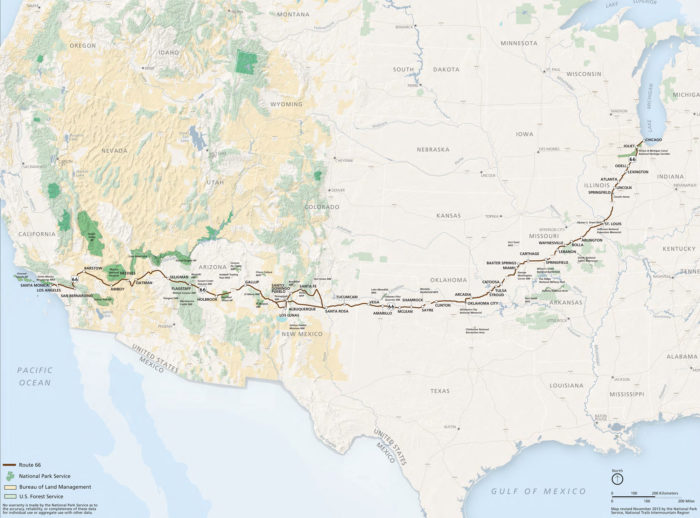
It originally ran through 8 states, Illinois, Missouri, Kansas, Oklahoma, Texas, New Mexico, Arizona, and California. Of course, starting in Chicago, running through St. Louis, all the way to Los Angeles. A massive scenic route that connected the underdeveloped cities of the West with the much more urbanized and industrialized cities of the American mid-west and north-east. At its inception, it served as the heart of trade and commerce between the eastern and western United States. But more than that, it connected many of the small towns across America that otherwise had no highway system and no connection to the developed areas of America.
Later, following the 1929 stock market crash, it would give hope to many Americans affected by the Great Depression and the Dust Bowl: a time in American history in which the Great Plains (American mid-west) faced severe drought and dust storms.
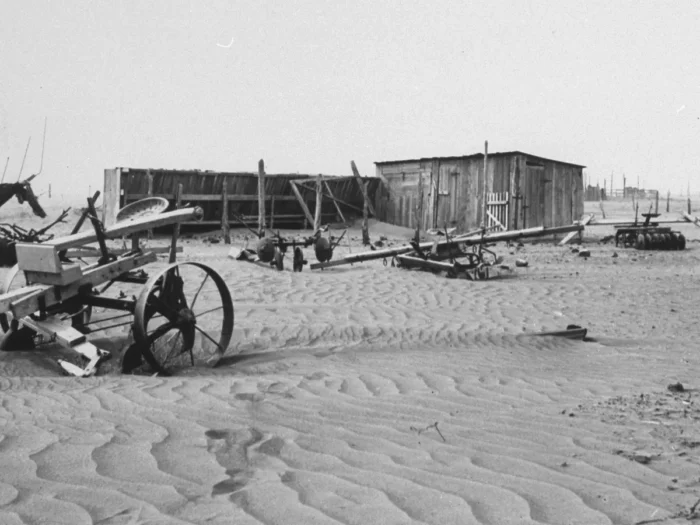
These two devastating events led to the Route being flooded by migrants from poorer states like Oklahoma, Arkansas, and Missouri. These migrants, later dubbed Okies, packed into old beat up trucks and cars, sometimes filled with 10 or more people, while towing many if not all of their possessions on the back end, down the route in search of a better life in California.
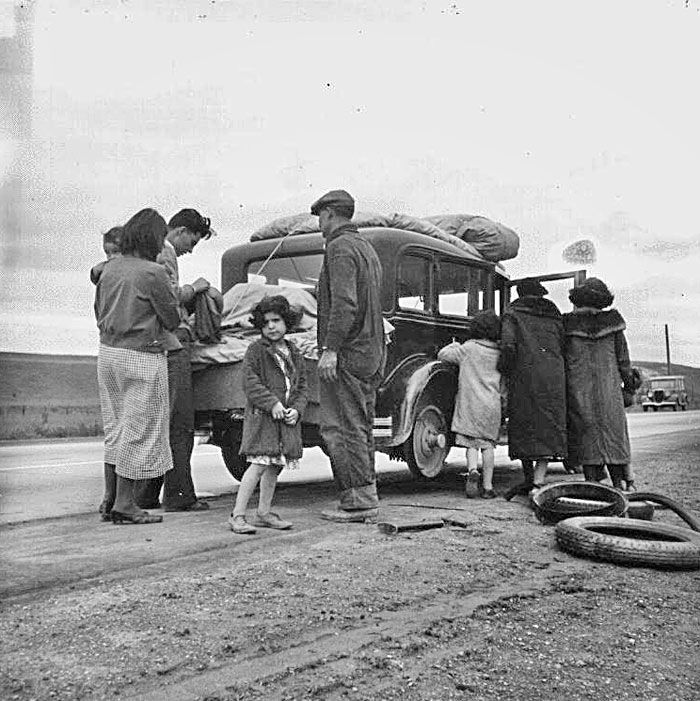
The great disparity and extreme poverty of these people was captured in perhaps one of the most famous novels in American history, ‘The Grapes of Wrath,’ by John Steinback. This along with the film later made about it put Route 66 on the map. Thus, making it the most famous highway in America and one of the most famous in the world. The Route became known as the ‘Mother Road,’ a name given to it by John Steinback. Riding down this great route, during this time would be to see one of humanity’s greatest misfortunes. Despite how awful those times were, they still deserved to be remembered. Many of the routes that were traveled along by people in the darkest times of their life still exist today. To better understand their suffering you can ride down many of those same paths they took and possibly imagine how difficult it must have been for them to undertake such a journey.
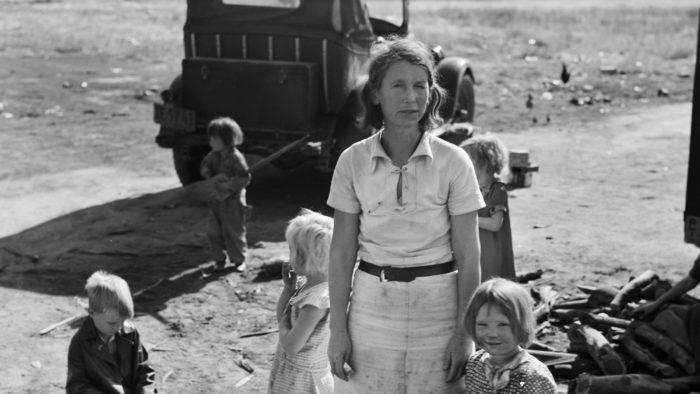
In this November 1936 photo from the U.S. Farm Security Administration, a mother, originally from Oklahoma stands with her five children near Fresno, Calif., where she works as a cotton picker. Despite the promise of a better life in California, life wasn’t much easier there as opposed to life on the ‘Mother Road.’
Although Route 66 had a tough past and saw some rough beginnings, it would see brighter days.
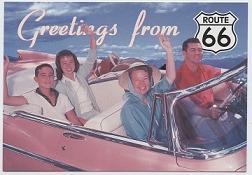
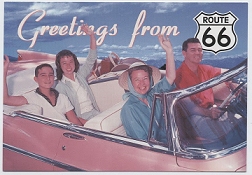
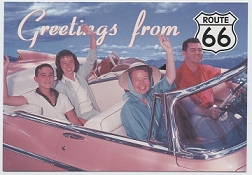

After WWII, America was raised out of the Great Depression and saw a huge economic boom, which would bring many changes and developments to the route. The Golden Age of Route 66 would see the route permanently changed, for the better. Before the Post World War II era the route only saw minor changes after its final paving in 1938. Only a few small alignments and mandates were made by the US federal government, since then. Following the war however, the route began to take on tons of new traffic from returning GI’s looking to start a new life and relocate to the West for more space and freedom.
This started yet another mass migration down the route, but this time a positive and uplifting one. The western states population during this time grew as much as 40 to 75%, in some states. This massive shift in the American population brought about many new businesses, not only in the major western cities, but along the route migrants traveled, chiefly Route 66. Many motels, service stations, and tourist courts began to pop up all along the route.
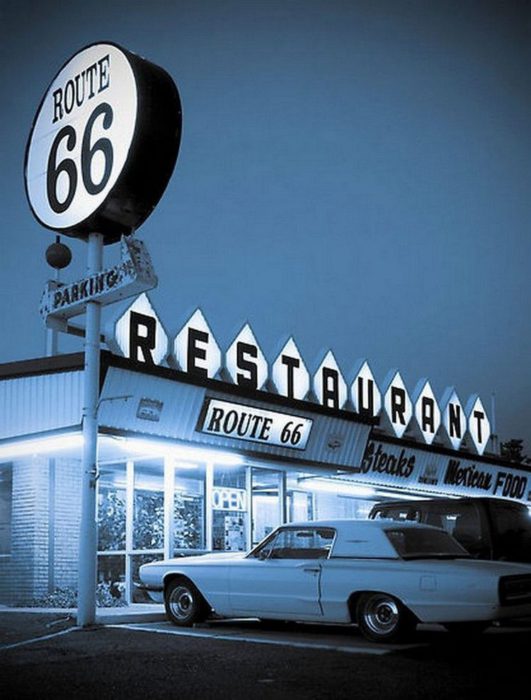
Almost all of them still stand today and the route has further become famous because of these attractions. If you were to ride down the route during this time you would, no doubt, encounter traffic in some of the popular pit stops, along the route. You could enjoy the many new amenities of the era, with the latest 1950’s technology and styles. An era that has no doubt been solidified in American history and around the world, with American 1950’s memorabilia being sought after all over the globe.
To get a better understanding of just what it was like to travel down Route 66 during this era.. check out this quick collaged travel video from the 1950’s:
https://www.google.com/url?sa=i&url=https%3A%2F%2Fwww.youtube.com%2Fwatch%3Fv%3DVFE6ba95eN0&psig=AOvVaw1uLjoyKSv_AaGeLUMSA2oR&ust=1664956362944000&source=images&cd=vfe&ved=0CAwQjRxqFwoTCPi-8PyLxvoCFQAAAAAdAAAAABAS
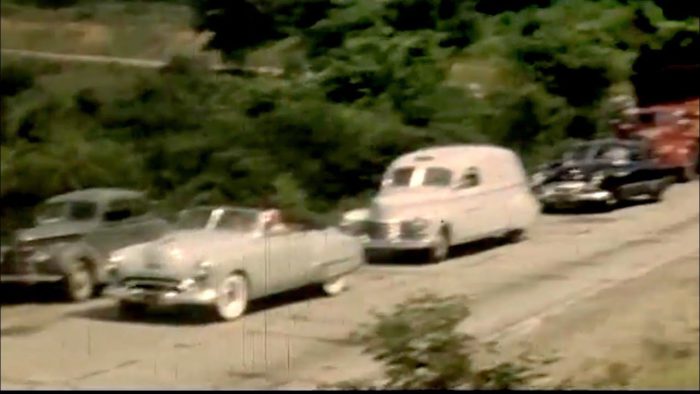
Unfortunately, this would be the peak of Route 66 and it would steadily begin to decline in the year 1956, when the current American President of the time Dwight D. Eisenhower had his Federal Aid Highway Act passed by Congress. This act began to implement the new US Interstate Highway system and with it Route 66 slowly began to be replaced and bypassed by these new governmental highways, for better or worse. Route 66 from that point onward saw no further development, with all the businesses and federal funding it had moving to the new interstate system.
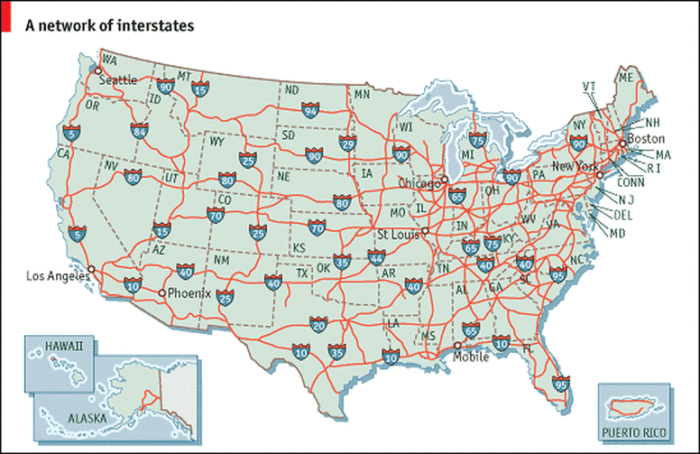
Over a period of 30 years the traffic going down the road began to shift to new interstates. Interstates like I-40, which would replace the route between Barstow, California and Oklahoma City; I -55 which would replace the route from Chicago to St. Louis, and finally I-44, which would replace the route from St. Louis to Oklahoma City, finally doing away with Route 66’s usefulness. A little over a decade later after the completion of I-44, Route 66 would officially be disbanded and lose its official highway designation in 1985.
Because of these new interstates the developments of Route 66 were either abandoned or remained as is, with no further repairs or upgrades to the infrastructure, essentially turning many towns along Route 66 into Ghost towns or towns frozen in time. This feature however, would later add to the appeal of traveling down this route, ironically making Route 66 even more famous.
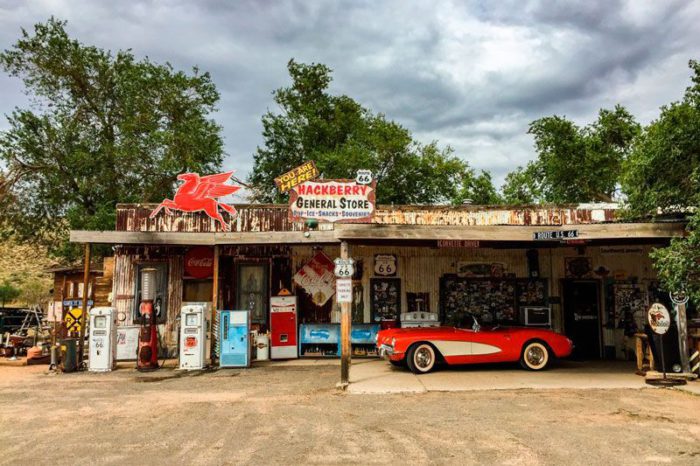
With all this notoriety Route 66 wouldn’t remain in the shadows and stay out of commission for long… In 1987 The Historic Route 66 Association of Arizona was founded and many of the sites along the route began to be restored and preserved. Following this, many states along the Route began to designate Route 66 as an historical landmark and later many declared it to be a historical State Scenic Byway. The Federal Government soon began to notice the actions taking place on the route and the historical significance the route served to America. In 1990 Congress enacted the Route 66 Corridor Preservation Program which gave further funds and assistance to preserve the highway. Most importantly, it became officially designated as a National Historical Landmark, giving it further significance linking it to the National Park Service. It became a symbol of America, that as stated by Congress in the 1990 legislation, U.S. Route 66 ’embodied the American Spirit, their heritage to travel, and their legacy of seeking a better life.’
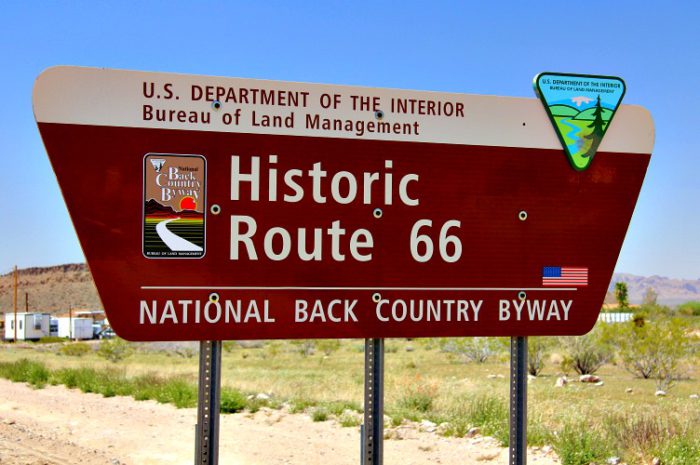
Since this time, Route 66 has seen a slew of new travelers down its long winding paths to take in its history, the beautiful landscapes, and the many old shabbies and interesting markers that line its path. What is it like traveling it today? Exactly that, a route filled with naturalistic wonders, with old ghost towns and retro pit stops. Down its routes you’ll be a few short detours away from some of the many historical sites in America, various Native American sites, like Taos Pueblo – the oldest Native American site in North America, and many great state and national parks, including the world’s most wondrous and highly rated National Park, The Grand Canyon. What better way to take all this in than on your motorcycle. You’ll get a real feel of the environment and the true experience of traveling down Route 66.
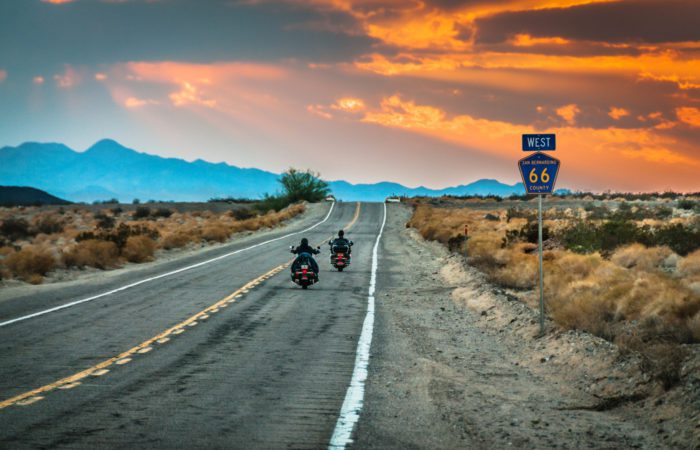
But do keep in mind, although the route is motorcycle friendly, and known for its many motorcyclists, it is still an extreme undertaking and a trip down this route on a motorcycle should be planned with care. Oftentimes the weather conditions will change drastically from extreme heat to extreme cold. You will also need special maps if you wish to drive down the route in its entirety, as the route has changed quite a bit, since its decline years from 1956 to 1985, up until its restoration and preservation years of the recent past and today. Don’t let this deter you though, as anything worth doing in life is going to be difficult or challenging, as I’m sure you know.
To help you along your journey, if you decide to ride down this route yourself in the future, there are two links linked at the bottom of this paragraph that could be extremely helpful. The first being a link to a writer and fellow rider on her experience riding down the route on a motorcycle. In this article you’ll find helpful information on how to navigate the route and a few good places to see and stops to make along the way. The second article links you to an official Route 66 motorcycle organization, where you can find the maps needed to navigate the route or even sign up for special group riding tours. Check em’ out…
https://roadtrippers.com/magazine/ultimate-route-66-motorcycle-road-trip/
https://www.eaglerider.com/route-66-motorcycle-tours?gclid=CjwKCAjw-L-ZBhB4EiwA76YzOf_K91G67Aot_UVJ9fTeUlIWmhTx-9mmTd_FHpWBRygUzh73D6YxMBoC-iUQAvD_BwE
Thank you for the read. I hope this information has been helpful and you enjoyed reading about Route 66 as much as we did writing about it. If you enjoyed this article let us know! So that we can make many more like it down the road on some of the world’s – other great motorcycle routes.
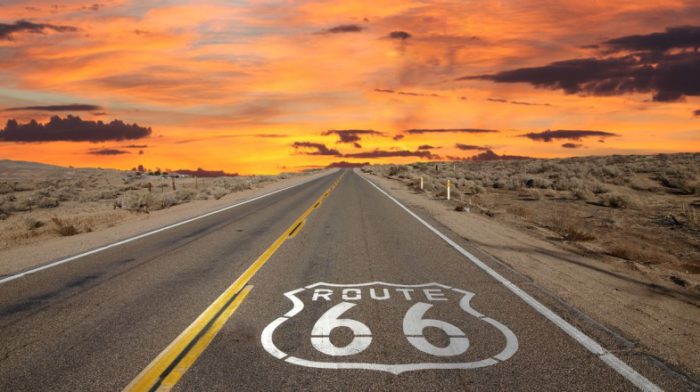
Thanks again!
Sincerely,
The CrossHelmet Team.